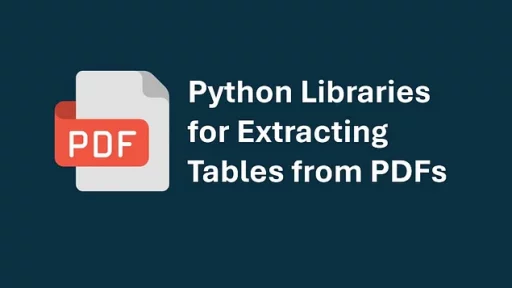The world of open source is vast — far larger than any one article could cover. What I like most about open source is the ‘out-of-the-box’ thought processes on display.
The open-source community empowers developers to collaborate, innovate, and build software solutions accessible to all and Python has become a favorite language in the open-source ecosystem.
This article explores a few projects in the Python open-source network, highlighting their contributions and discussing their impact.
Frigate: Intelligent Video Surveillance
Frigate is an open-source Network Video Recorder (NVR) focused on real-time AI object detection. It processes video feeds locally, ensuring privacy and reducing reliance on cloud services. The project supports multiple cameras and uses TensorFlow for its AI capabilities. Developers and hobbyists alike appreciate its flexibility, especially for building custom surveillance setups. Its source code is licensed under MIT and available on GitHub.

Key Features of Frigate
- Local Processing: Frigate eliminates the need for cloud-based processing. All object detection and video analysis occur on the user’s hardware, ensuring that sensitive data remains private and secure. This design also allows Frigate to function effectively in environments with limited or no internet connectivity.
- Multi-Camera Support: The platform supports multiple camera streams simultaneously, making it ideal for setups ranging from small households to large-scale deployments. Each feed can be individually configured for specific detection parameters, ensuring tailored performance for different monitoring needs.
- Efficient Hardware Utilization: Frigate is optimized to run on hardware accelerators such as Coral Edge TPU, NVIDIA GPUs, and even modest systems like Raspberry Pi 4. This flexibility allows users to build cost-effective setups while maintaining high performance. Hardware acceleration ensures that even resource-intensive tasks like real-time object detection can be handled smoothly.
- Customizable Detection Zones: Users can define detection zones within camera feeds, allowing the system to focus only on areas of interest. For instance, a user monitoring their driveway can configure Frigate to ignore the road in the background, reducing false positives caused by passing vehicles.
- Event Recording and Notifications: Frigate records events triggered by detected objects, ensuring that users have a log of all relevant activity. It also supports integrations with platforms like Home Assistant, enabling real-time notifications for events such as motion detection or the presence of a person.
- Extensible Configuration: The system offers extensive configuration options through YAML files. Users can specify detection parameters, hardware settings, and event retention policies, tailoring the software to their unique requirements.
Community and Ecosystem
Frigate has a vibrant community of users and contributors who continuously improve its features and capabilities. Its open-source nature encourages collaboration, enabling hobbyists and developers to adapt the software for niche applications. The project is well-documented, with comprehensive guides available on its official website and GitHub repository.
Frigate also integrates seamlessly with home automation ecosystems like Home Assistant, allowing users to create complex workflows. For example, users can automate actions such as turning on lights when a person is detected or sending alerts when a package is delivered.
Mozilla’s Open-Source Contributions
Mozilla has been a pillar of open source, contributing numerous projects aimed at accessibility, transparency, and user empowerment. Here are some highlights:
- PDF.js: A JavaScript library that renders PDFs directly in web browsers. It eliminates the need for third-party plugins and is widely used in web applications. Its open-source code is hosted on GitHub under the Apache License 2.0.

- DeepSpeech: Mozilla’s DeepSpeech brings speech-to-text capabilities to developers. It uses machine learning models trained on large datasets. Applications range from voice assistants to real-time transcription services. DeepSpeech’s code is available on GitHub under the Mozilla Public License 2.0.
- DeepSpeech Docs

- Readability: Readability simplifies web pages for easy reading by stripping unnecessary elements. It powers Firefox’s Reader View and helps users focus on content. The project is accessible on GitHub.

These projects showcase Mozilla’s commitment to creating tools that prioritize user control and freedom.
SQLAlchemy: Bridging Python and Databases
SQLAlchemy is a powerful SQL toolkit and Object Relational Mapper (ORM) for Python. It simplifies database interactions while maintaining performance. Developers can use it to abstract complex queries or dive deep into raw SQL when needed. It’s particularly valued in web development, where managing data efficiently is crucial. Licensed under MIT, SQLAlchemy’s code is available on its official website and GitHub.

Key Features of SQLAlchemy
1. Comprehensive ORM: SQLAlchemy’s ORM allows developers to map Python classes to database tables seamlessly. It supports a declarative syntax, making it intuitive to define and interact with database schemas directly in Python code.
2. Core SQL Expression Language: The SQL Expression Language is SQLAlchemy’s core feature. It provides a programmatic way to construct and execute SQL queries. This gives developers full control over query generation, from simple CRUD operations to complex joins and subqueries, without being confined to ORM abstractions.
3. Database Agnostic: SQLAlchemy supports multiple relational database systems, including PostgreSQL, MySQL, SQLite, Oracle, and Microsoft SQL Server. Developers can switch between databases with minimal code changes, thanks to SQLAlchemy’s dialect system.
4. Lazy Loading and Eager Loading: SQLAlchemy optimizes database interactions with lazy loading (fetch data only when needed) and eager loading (pre-fetch related data). This flexibility ensures optimal performance and resource usage, especially for large datasets.
5. Transactions and Connection Pooling: SQLAlchemy manages database transactions and connection pooling out of the box. These features ensure efficient use of database resources and provide a robust mechanism for managing concurrent access.
6. Customizable Schema Management: Developers can define database schemas using SQLAlchemy’s declarative syntax or reflect existing schemas from a database. This dual approach makes it easy to work with both new and legacy databases.
7. Extensible and Modular Design: SQLAlchemy’s design is highly extensible. Developers can customize behaviors, define new types, or integrate additional features to fit specific application needs.
8. Integration with Alembic for Migrations: SQLAlchemy works seamlessly with Alembic, a powerful migration tool. Alembic simplifies schema migrations by enabling developers to create, modify, and version database schemas as applications evolve.
9. Support for Asynchronous Programming: With the rise of asynchronous programming in Python, SQLAlchemy has introduced support for asynchronous database operations, allowing developers to build scalable, non-blocking applications.
10. Rich Query API: SQLAlchemy’s query API is intuitive and flexible. It allows developers to construct queries dynamically and execute them efficiently. From simple filters to complex aggregations, SQLAlchemy’s API covers all use cases.
Community and Ecosystem
SQLAlchemy is not just a tool; it is a cornerstone of the Python ecosystem for working with databases. Its vibrant community and robust ecosystem contribute significantly to its success.
Active Community
SQLAlchemy has a large, active community of developers and contributors. Its mailing lists, forums, and chat groups serve as excellent resources for users seeking help or advice. Questions about SQLAlchemy are also frequently discussed and answered on platforms like Stack Overflow.
The community is instrumental in maintaining the library’s relevance. Contributors regularly update SQLAlchemy to support new database systems, incorporate modern Python features, and enhance its performance.
The YouTube channel “Ants Are Everywhere” delves into the realm of open-source code, offering viewers insightful explorations of various software projects. As of January 2025, the channel boasts approximately 13.9K subscribers and has produced over 211 videos.

The channel’s content is diverse, featuring in-depth code readings and analyses of numerous programming languages and frameworks. Notably, several videos focus on Python-related projects, such as:
- PyTorch: Let’s read the code!
- Looking at the source code to Flax, a Jax-based Neural Network library for Python
- Exploring Reinforcement Learning Repos: Bsuite, Rlax, Flax
Beyond YouTube, “Ants Are Everywhere” fosters a community of learners and developers through various platforms:
- Discord: An active server for discussions and collaborations.
- Mastodon: Updates and interactions on the Mastodon network.
- Patreon: Offers exclusive content and supports the channel’s endeavors.
Thank you for reading this article. I hope you found it helpful and informative. If you have any questions, or if you would like to suggest new Python code examples or topics for future tutorials, please feel free to reach out. Your feedback and suggestions are always welcome!
Happy coding!
Py-Core.com Python Programming
You can also find this article at Medium.com

